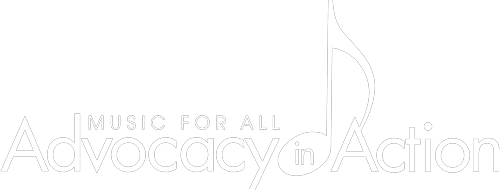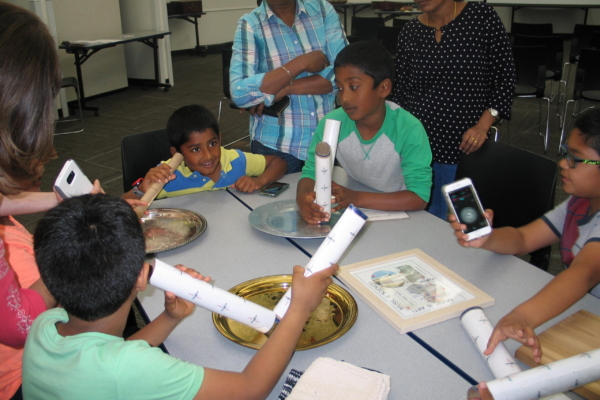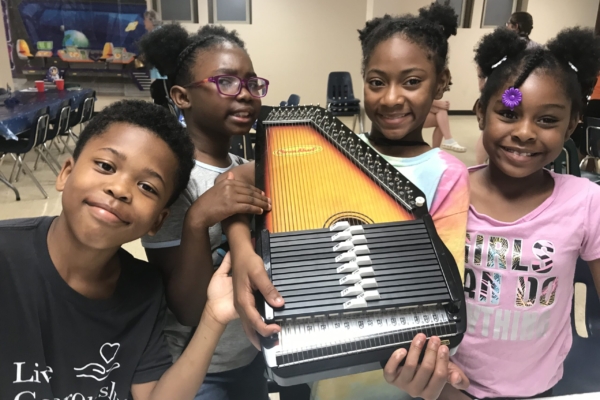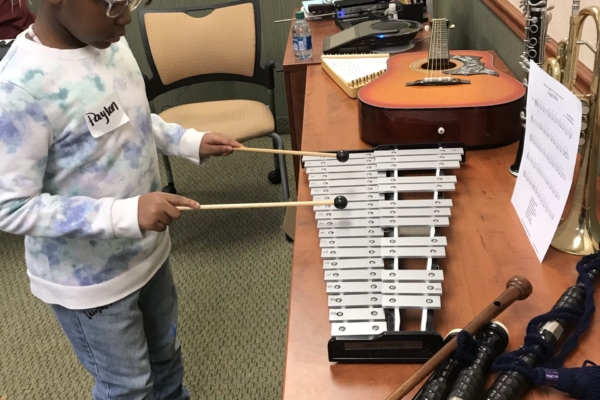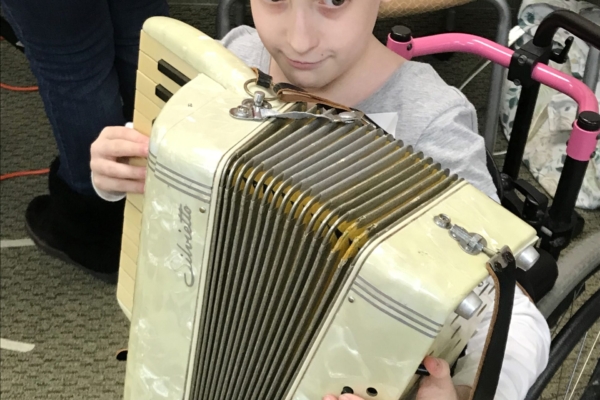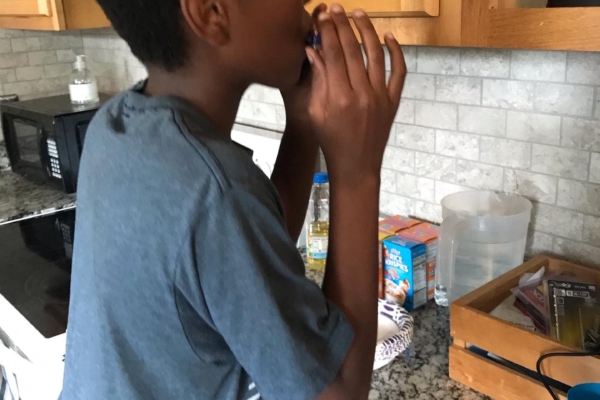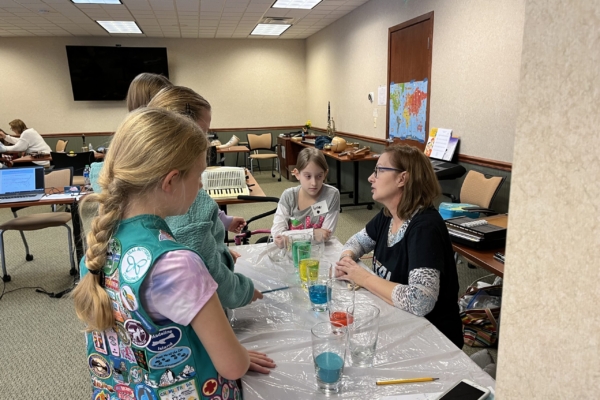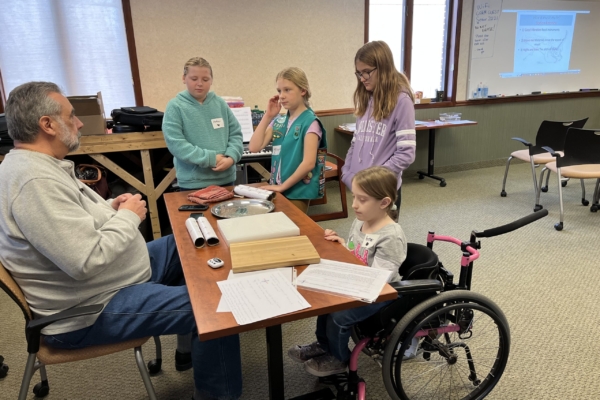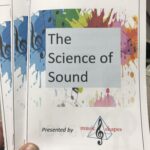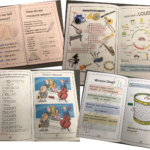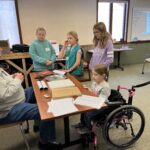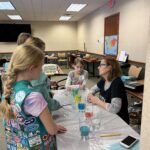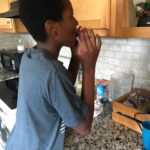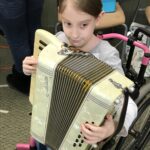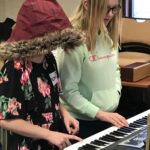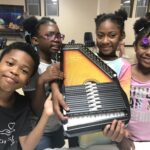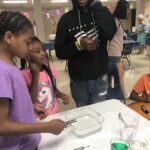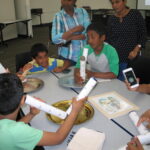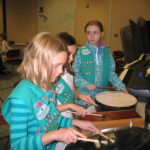“Science of Sound Workshop”
Music Shapes Nonprofit
Oakland, MI
Description
Science of Sound is a 1 hour interactive program. It is a merger of music and science where kids explore how sound works through the use of music instruments. Students rotate through three stations exploring Reed vibration, sound absorption/reflection, and pitch. Instruments are used to demonstrate the principles. Students discover how and why music instruments make sound. Several instruments are available for the students to explore and try out as well. During the 2022/2023 academic year, Music Shapes conducted classes for Girl Scout Music Badge, Child Foster Care Facility, and Taylor, MI public school music class.
Objectives
Summary of Objectives:
- Inspire students to engage with music in some way that fits their personality
- Learn the musical instrument families
- Gain listening skills to identify instruments within music ensembles
- Learn principles of sound and how it relates to music and music instruments
- Demonstrate that science minded kids can appreciate music and artistic minded kids can appreciate science
- Learn that music can be made from everything
- Show that music is FUN!
Details within the Program:
- Introduction – Play videos of Sound Principles with music, music instrument families, listening to orchestra music and identify instruments heard, review instruments and identify the family to which it belongs.
- Station 1: How do Reeds work? – Make straw flutes to explore how a reed functions in a music instrument. Instruments consist of reed instruments including saxophone, harmonica, accordion.
- Station 2: How does Sound Absorption/Reflection work? – Use listening tubes to compare sound response of sound being directed to different material plates. Instruments consist of various drums of different materials including wood, metal, animal skin.
- Station 3: What causes different Pitch? – Use 5 glasses with a graduated amount of water from none to full. Strike glass to hear different pitches. Explore added variations to determine any change to pitch such as sand instead of water. Instruments consist of autoharp, chimes, guitar, violin, panpipe.
Target Audience
The target audience is 5th grade students.
- We wanted to work with Elementary students and inspire them to bring music into their lives in some manner. Many schools were adding music programs to Middle School and not so much at the Elementary program. We felt we could perhaps fill the gap and provide music access to younger students. We consider our programs as Introductory to Music.
- Our content includes science principles which are age appropriate for the students to comprehend. We do include older and younger students which is also fun. The older students enjoy showing the younger students the instruments! We have done this workshop for adults ; we raise the vocabulary and principles with them and it has been really enjoyable!
- It is important to us that the music instruments are handled gently and respectfully. The students explore the instruments, are able to hold them, review them, play them, and discover sound and music! Late elementary students understand this and do work within our guidelines to protect the instruments.
- Elementary students are still in a phase where discovery is fun and they are expressive about it!
- Whenever possible, we want to reach students who are at-risk kids, underserved, or experiencing hardships. Many children still do not have access to music playing and performing. We love when we can provide a fun musical experience to these children. Therefore, we do focus on working with children in nonprofit youth groups, after school programs, foster kids. etc.
Timeline
This is a reoccurring program for Music Shapes. We now review it periodically to make adaptations and improvements based on current learning methods used in the schools. Our original planning outline is shown.
- Define goals
- Define content
- Define music instruments necessary for content
- Schedule a pilot class with a local after school non profit
- Make any changes
- Market class to other nonprofits, after school programs, schools, camps, etc.
We achieved this plan within 3-4 months. We have been conducting this workshop since Summer 2017.
Overview of Planning and Execution
The Music Shapes Directors planned the program. We have three Directors. Together we researched current teaching methods and found the outline for the Science Rotation Stations, then organized the content, ran practice runs. We then scheduled a pilot run with a known nonprofit. Over the course of 3 months (including 4-5 meetings of 2 hours each) the program was ready to present. Founding Directors included Engineering Managers, Piano Major, and Piano Technician. We now have a Director who is a retired public school teacher who assists in advising us on school practices.
With the execution portion of the program, a minimum of 3 leaders are necessary to insure the stations run smoothly. An optimum number of leaders is four, with the added person assisting in time keeping and moving the groups through the station rotation smoothly. The time commitment to execute the program is 2.5 hours for three people to set up, run class, pack up.
With each workshop we conduct, we do a review after it is complete and make any revisions we deem will be an improvement.
Tools and Resources
- Internet searches and personal advisors (teachers) for standardized/age appropriate teaching methods
- Internet search for music and science of sound concepts
- Known non profit groups who would allow us to do a pilot with their students
- Marketing through social media, local paper, online posts
- Many organizations do not allow pictures to be taken to protect the children. However, one organization allowed the major TV station to come in and do a story on our Science of Sound class while in Detroit! This aired online as well as on the TV news channels. This was completed in July of 2022, but we use the video as a resource when we can! It is included in the Marketing Items.
(Note: Since we are not always allowed to take pictures at our workshop, we have included pictures from events where it was allowed. They are from the same workshop but at a different time.)
Marketing and Promotion
Marketing strategies included:
- Social Media postings via our Facebook, Instagram pages
- Music Shapes Newsletter Announcements
- Posting in local online neighborhood formats: Patch, Nextdoor
- Word of Mouth – Groups who invited us to their facility shared our program with others identifying how fun and informative it was
- Reaching out to individual youth nonprofits and groups to share our program and invite them to consider having us conduct the workshop with their students – We did this through email.
- Music Shapes is a member of a local group which is an organized group for nonprofits in our area. The group meets monthly and shares events, ideas, volunteer needs, etc. We share our available programs with this group.
All of these strategies have a positive impact as far as interest in the program and enrollment. For the 2022/2023 academic year, the most effective strategies were numbers 1, 4, 5, and 6! Word of mouth and face to face conversations often are more successful in obtaining new clients. Once we are invited to conduct a workshop with an organization, we then have the opportunity to share more about what Music Shapes is and share info about our Instrument program and our Financial Support of Music Funds. Most of the children who have received funding from Music Shapes have come from organizations where we first conducted a workshop!
Costs
Music Shapes conducts workshops at the requestor’s location or a public venue such as a library.
The program requires the following:
Music Instruments – Many of the instruments have been donated to Music Shapes. We have purchased some on our own so that we did not need to use instruments belonging to individuals. We have spent $200 – $300 to buy instruments and to repair donated instruments. Instruments include those from all instrument families.
Projector/Screen – We use a projector/laptop owned by one of our Directors. We use screens at the workshop location or simply project on the wall.
Science Experiment Materials – Drinking straws, scissors, water glasses, water, strikers, sand, various slabs of material (wood, metal, glass, etc), slinky, tuning forks,
These items were found in the home. We did not purchase any of these. Some items can be optional if they are not readily available.
Program Booklets – 6 page, double sided, color booklet ($3.50 -4.00 at print shop) Music Shapes owns a printer so costs are lower.
Personnel – Our organization is all volunteers.
This program is not expensive to conduct unless all instruments need to be purchased and if paying personnel.
The program booklet is optional, but we do love it!
Challenges/Obstacles
With the 2022/2023 academic year, our programs were conducted in a more schedule restricted environment. This is especially true when we worked with the public schools. We needed to complete the workshop within 45 min. In order to do this we revised the format a bit! The beginning of the program has an introduction including 2 videos and demonstrations prior to going into the three stations. We eliminated the introduction (20-30 min) and incorporated all the material into the science/music stations. It worked out really great. We had a smaller audience in each station allowing the students to focus better. The information delivered was grasped quicker as well. Students aren’t always watching a video or understanding it; we believe delivering the info in the smaller groups was actually more effective. This format made the stations more interactive and fun! Students were highly responsive to it! As we wanted to insure that the students had a good take away of the science principles, we added that to our handout and made it into a booklet. The booklet is 12 pages (6-8.5×11 sheets). It includes music principles, sound principles, puzzles, and fun!
This method worked out so well, we are looking at conducting all of our Science of Sound workshops in this manner! It works well and eliminates the need for a projector, speakers, and laptop. We are definitely keeping the booklet!
Success/Effectiveness Measurement
Our Science of Sound workshop is very popular. Kids love it! Music is learned, and science is learned. Learning about how the instruments make sound is a unique experience; one we feel inspires students to want to explore music! We have conducted the workshop for 86 students this academic year. This includes Girl Scout Music Badges (6 of 8 in the troop), After School Foster Program (20 of 25 in the group) and Public School music class (60 of 60 in the classes). Parents, teachers, and leaders have praised our program for it being fast paced, organized, interactive, clear, informative, and fun. To date, 580 children have participated in this workshop which is about 90 students per year!
Community Impact
Our program allows kids to gain confidence and discover they can make music! As a small nonprofit, we do not have resources for long term lessons. Therefore, we focus on short term ability. The program highlights instruments which can be played without using sheet music and having the ability to read music. Although we include many instruments, we use zithers, thumb pianos, drums and harmonicas which demonstrate the science really well and also allow the kids to play a song in a short time. It gives the student a moment of success. That moment may inspire them to further pursue music.
Advice for others?
- If you do not have a lot of music instruments, you can create some from household goods until instruments are obtained.
- Use household items to demonstrate the sound principles. ie. a slinky to demonstrate the longitudinal sound wave!
- One large room or 3 smaller ones is best to manage noise!
